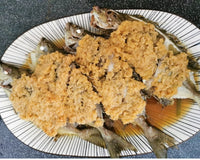Wet markets have long been a fabric of Singapore’s culture. Singapore’s first wet market is widely believed to be Tiong Bahru Market, then known as Seng Poh Market when it was built in the 1950s. The market brought together and regulated hawkers and grocery sellers who had no permanent place of sales previously. The term “wet market” was popularized in the 1970s to distinguish between markets with air conditioning and markets without. Wet markets in Singapore came to be known for having the freshest and widest variety of groceries. It became a way of life. It was the heart of the community.
Wet markets had their heydays in the 1970s and 1980s. That period saw rapid growth when the government accelerated construction of wet market cum hawker centres all over Singapore. This allowed the government to better regulate hawkers and market stallholders while bringing a great level of convenience to the population. By the 1990s, almost every household in Singapore is conveniently located near a market or hawker centre. This was also a period of boon for many wet market stallholders.
The period of rapid expansion levelled off in the 1990s. Growth stagnated but wet markets continued to enjoy brisk business for many years. Unbeknownst to them, wet markets will gradually see their fortunes change in the coming years ahead. Today, wet markets are still considered the best place to go to find the best groceries. However, sales are a fraction of when compared to the 1980s and 1990s. There are a few reasons for this decline.


Demographics
The average household size in 1990 was 4.2. In 2016, this figure has dropped to 3.3. Households with 6 or more members have declined from 21% in 1990 t0 11% in 2005. Household sizes are now drastically smaller compared to the 1990s. This also makes it less economical to cook at home. Cost is not the only concern. Back then your Ah Mah can spend an hour to prepare dinner for a family of at least 4-5. Today, the same 2 hours will benefit only 3 people. Cooking at home is also less economical in terms of time. It is much easier to ‘tabao’ and people can also save on the hassle of washing up afterwards.
Dual Income Families
The increasing trend of dual-income families also makes it more unlikely that families will cook at home. With both parents at work, it is harder than ever to find time to prepare meals at home. Add to that the wet markets are only open in the mornings, which make it almost impossible for working families to visit on weekdays.
Emergence of Supermarkets
Supermarkets are strong direct competitors to wet markets. They are usually even more conveniently located than wet markets. They are open for longer hours, which makes it easier for working mums to restock on their way home from work. They carry a much larger variety of products, though wet markets still retain the edge in terms of fresh groceries. Supermarket shopping is also a much nicer experience compared to shopping in the damp wet markets.


Proliferation of app-based meal delivery services
Nowadays, with the popularity of apps like Deliveroo and Foodpanda, it is easier than ever to ‘tabao’ food. Yes, it costs a slight premium compared to if one were to ‘tabao’ the food themselves. However, today’s Singaporeans are time-starved and are more than happy to pay the premium in exchange for the convenience.
All the above reasons have contributed to a gradual decline to the wet market business. However, they are not the main reason that is threatening the survival of the wet market tradition. Wet markets’ biggest threat comes from the lack of renewal. The younger generations who do not want to take over their parents’ stalls. The younger generations who are put off by the lack of glamour and hard work required to succeed in the wet market. A lot of first generation wet market stallholders return the stalls to the government once they are ready to retire. And the government is having trouble renting the stalls out. Wet market stalls that were once hot commodities that can fetch takeover fees in the tens of thousands are now being tendered out for $10 per month. The removal of the minimum bid price and the drastic reductions in monthly rental has hardly driven up the interest of people wanting to work in the wet market. Go to any wet market today and we can see an increasing number of empty stalls. This situation does not apply to hawker stalls, which are as vibrant today as ever. Young enterprising hawkers are seen to be hip. Young enterprising wet market stallholders have a stigma of not being able to cut it in the corporate world.
The wet market tradition is one that deserves to be preserved. However, nostalgia for nostalgia’s sake is futile. What can we do to revitalize wet markets? How can we make people excited to go to the wet market again? We will look at a few ideas next time.






